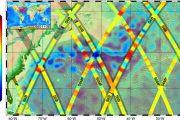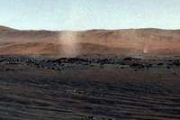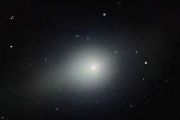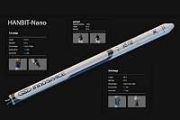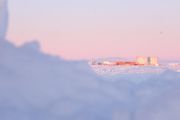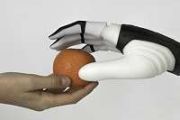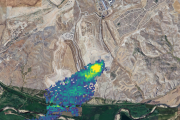
Copernical Team
Hubble offers a new view of Sombrero galaxy
 Image:
Sombrero Galaxy
Image:
Sombrero Galaxy Space technologies find new life on Earth

Each year, cutting-edge technologies developed by the European Space Agency (ESA) for its complex missions and scientific discoveries find new life in applications used to benefit Earth and improve our daily lives.
From 9–13 April, ESA was guest of honour at the 50th International Exhibition of Inventions Geneva in Switzerland with more than 1000 inventions, which attracted 30 000 visitors from the public. ESA showcased its new technologies and applications that have been invented for space missions and patented for use in and outside the space arena.
Momentus inks five-year manufacturing deal with Velo3D
 Momentus Inc. (NASDAQ: MNTS), a U.S. space infrastructure company, has signed a five-year master services agreement with additive manufacturing leader Velo3D, Inc. (OTC: VLDX). This partnership marks a strategic effort to accelerate the production of space hardware using cutting-edge 3D printing technology.
The agreement, structured as an all-stock transaction and disclosed in a recent 8-K
Momentus Inc. (NASDAQ: MNTS), a U.S. space infrastructure company, has signed a five-year master services agreement with additive manufacturing leader Velo3D, Inc. (OTC: VLDX). This partnership marks a strategic effort to accelerate the production of space hardware using cutting-edge 3D printing technology.
The agreement, structured as an all-stock transaction and disclosed in a recent 8-K Scientists uncover why carbon-rich space rocks rarely reach Earth
 A comprehensive international study may finally explain why carbon-rich meteorites, which are thought to contain key ingredients for life, are so rarely found on Earth despite being common in space.
Scientists from Curtin University's School of Earth and Planetary Sciences, the International Centre for Radio Astronomy Research (ICRAR), the Paris Observatory, and several other institutions
A comprehensive international study may finally explain why carbon-rich meteorites, which are thought to contain key ingredients for life, are so rarely found on Earth despite being common in space.
Scientists from Curtin University's School of Earth and Planetary Sciences, the International Centre for Radio Astronomy Research (ICRAR), the Paris Observatory, and several other institutions Outpost awarded contract to develop reentry shield tech for space-based cargo delivery
 Outpost Technologies Corporation (Outpost Space), a leader in reusable space logistics platforms, has secured a $1.8 million contract from the U.S. Space Force under the SPACEWERX Small Business Innovation Research (SBIR) initiative. The award, granted through the ICED-T (Innovative Cargo Exoatmospheric Delivery Technology) topic, supports Outpost's Shielding Technology for Exoatmospheric Experi
Outpost Technologies Corporation (Outpost Space), a leader in reusable space logistics platforms, has secured a $1.8 million contract from the U.S. Space Force under the SPACEWERX Small Business Innovation Research (SBIR) initiative. The award, granted through the ICED-T (Innovative Cargo Exoatmospheric Delivery Technology) topic, supports Outpost's Shielding Technology for Exoatmospheric Experi Rocket Lab tapped for major defense contracts to advance hypersonic testing
 Rocket Lab USA, Inc. (Nasdaq: RKLB), a prominent player in global launch services and space systems, has been selected to participate in expansive defense initiatives by both the United States and United Kingdom to support the advancement of hypersonic technologies using its HASTE launch vehicle and engineering capabilities.
The U.S. Air Force has brought Rocket Lab onboard its $46 billion
Rocket Lab USA, Inc. (Nasdaq: RKLB), a prominent player in global launch services and space systems, has been selected to participate in expansive defense initiatives by both the United States and United Kingdom to support the advancement of hypersonic technologies using its HASTE launch vehicle and engineering capabilities.
The U.S. Air Force has brought Rocket Lab onboard its $46 billion NASA prepares to launch space-based quantum gravity sensor
 In a major step forward for quantum sensing and Earth science, NASA is preparing to fly the first quantum gravity sensor in space. Developed in partnership with academic institutions and private industry, the instrument is designed to measure variations in Earth's gravity with unprecedented precision. The effort is funded by NASA's Earth Science Technology Office (ESTO) and could revolutionize h
In a major step forward for quantum sensing and Earth science, NASA is preparing to fly the first quantum gravity sensor in space. Developed in partnership with academic institutions and private industry, the instrument is designed to measure variations in Earth's gravity with unprecedented precision. The effort is funded by NASA's Earth Science Technology Office (ESTO) and could revolutionize h Hughes and Eutelsat broaden LEO satellite broadband access for European enterprises
 Hughes Network Systems Ltd, operating as Hughes Europe, has launched low Earth orbit (LEO) satellite broadband services across the continent, marking a significant step forward in high-performance connectivity for businesses and public sector users. The offering integrates OneWeb's LEO satellite infrastructure, now under Eutelsat, with Hughes' network expertise and advanced ground equipment.
Hughes Network Systems Ltd, operating as Hughes Europe, has launched low Earth orbit (LEO) satellite broadband services across the continent, marking a significant step forward in high-performance connectivity for businesses and public sector users. The offering integrates OneWeb's LEO satellite infrastructure, now under Eutelsat, with Hughes' network expertise and advanced ground equipment. Cambodia's Chinese casino city bets big on Beijingdata
 Once a collection of sleepy fishing villages, vast Chinese investments have transformed Cambodia's Sihanoukville into a half-finished gambling resort with signs everywhere in Mandarin.
China is the largest investor and trading partner in Cambodia, much of it directed towards the Gulf of Thailand port, a key strategic location in the Belt and Road Initiative (BRI) championed by leader Xi Jinp
Once a collection of sleepy fishing villages, vast Chinese investments have transformed Cambodia's Sihanoukville into a half-finished gambling resort with signs everywhere in Mandarin.
China is the largest investor and trading partner in Cambodia, much of it directed towards the Gulf of Thailand port, a key strategic location in the Belt and Road Initiative (BRI) championed by leader Xi Jinp Amount of sunlight at Earth's surface shows long-term shifts tied to pollution
 While sunrise is constant, the intensity of sunlight that reaches Earth's surface is not. A new perspectives article by an international research team reveals that this solar variability occurs over decades, and is closely linked to air pollution trends and environmental policy. Published March 15 in Advances in Atmospheric Science, the study outlines the global phenomena of "dimming" and "brigh
While sunrise is constant, the intensity of sunlight that reaches Earth's surface is not. A new perspectives article by an international research team reveals that this solar variability occurs over decades, and is closely linked to air pollution trends and environmental policy. Published March 15 in Advances in Atmospheric Science, the study outlines the global phenomena of "dimming" and "brigh 


